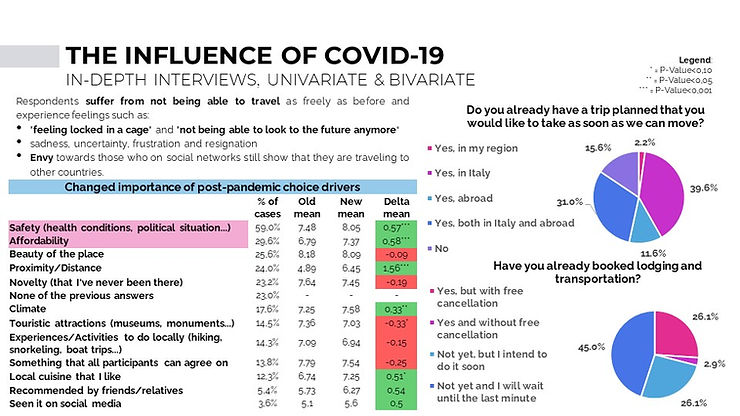
The influence of social media and FoMO on tourism in Italian Y and Z generations
This research, done by Lorenza Rossi, was aimed at investigating the relationship and influence that social media and Fear of Missing Out (FoMO) have on the tourism consumption process of people born from 1981 to 2010 Italian. The research question to be answered is: “Do social media and FoMO influence the way Italian Millennials (1981-1996) and GenZers (1997-2010) travel and how?”. In order to answer the research question, an exploratory qualitative research, through ten in-depth interviews, and a quantitative research, using a web-based questionnaire (CAWI method), were carried out, from which 551 valid observations for the analysis originated.
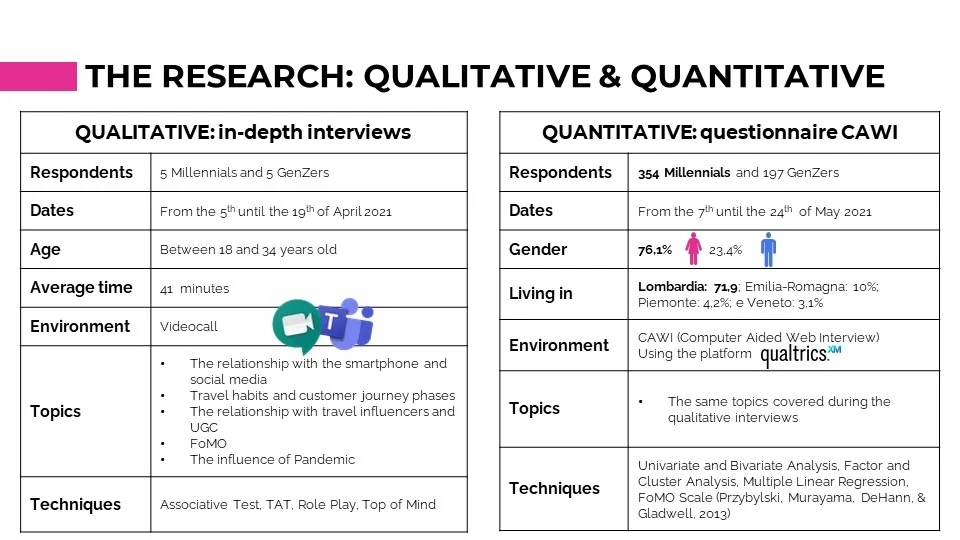
Social media, are now part of the daily lives of these two generations, particularly Gen Z, and are also a very importnat part of the customer journey and the tourism consumption process. In fact, at each stage, young tourists are accompanied by the use of their smartphones and social platforms, to inspire, inform, purchase, experience and remember their travel experiences.
FoMO is defined as a social anxiety caused by the thought that other people might have rewarding experiences that you are not participating in and is characterized by the desire to stay continually connected online to experience through what is being shared. From this analysis, it appears to be a feeling experienced most frequently by GenZers and is closely related to the use of one’s smartphone and social media.
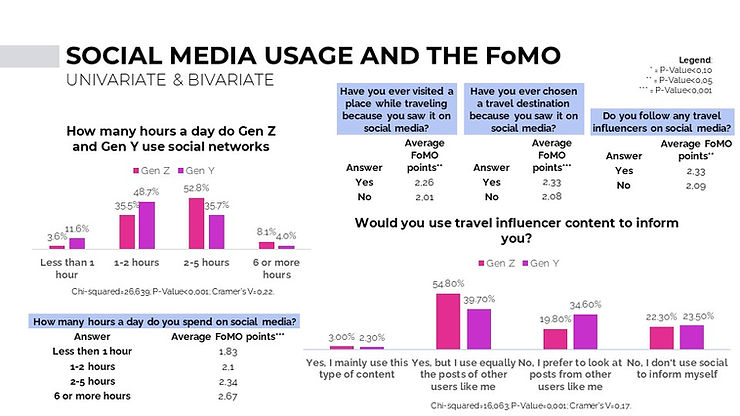
The fear of not keeping up with others, influences the tourism consumption process of those who experience it. In fact, research has shown that individuals with higher FoMO scores are more likely to be influenced by what they see on social media and often choose the destination or places to visit on a trip precisely because they have seen them on these platforms. They also follow travel influencers more and think their content is truthful, although they also use UGC to inform themselves. They themselves are the users who produce the most of them, dedicated to the experiences they live while traveling, thus becoming a valuable resource for the players in this sector.
Offline and online word of mouth and reviews, have emerged as the most used means of information by these two generations, along with Google and social search. However, it is necessary to stimulate travelers to write reviews of the places visited, because respondents tend not to do so often.
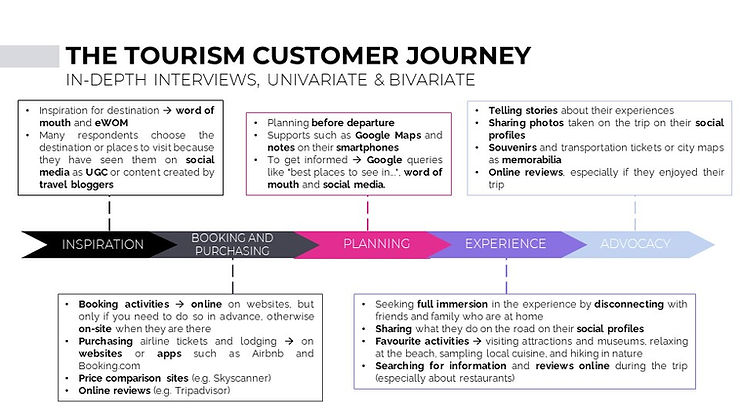
Subsequently, it was possible to divide the sample into 4 subgroups, according to the variables used by them to choose their travel destination.
“The Old Style” are similar to the tourists of the past: for the choice of the destination they look at the most practical aspects of the trip, they happen to rely on travel agencies and they always look for a new destination in order to visit the most tourist attractions. This cluster is the least numerous and is also the least “social” and the least “fashionable”; they travel to spend more time with their loved ones and get out of the routine, through the knowledge of new cultures.
“The carefree ones” is the cluster formed by those who choose the destination to be able to relax and have fun: they must all agree, there must be the perfect climate and a landscape to admire while they rest and eat local dishes. The members of this subgroup, prefer Italian destinations, do not inform themselves much before leaving and are not influenced by social media, in fact they also have the lowest levels of FoMO.
“The Influenced” are instead individuals who base their choice on word of mouth and social media, in their ideal destination there must be tourist attractions with which they can take selfies to post on their profiles and experiences in order to tick a few points of their endless “Bucket List”. This cluster has the highest FoMO score and is the one that also uses social the most to inform themselves.
“Indiana Joneses” are part of the largest subgroup and are the most active and curious tourists in the sample. They choose their destination based on the beauty of the place and the possibility to experience unknown places, pushing themselves out of their comfort zone, but always keeping an eye on their own safety. This cluster is the one that travels most often abroad, gets informed and is quite influenced by social media and the desire to try as many experiences as possible.
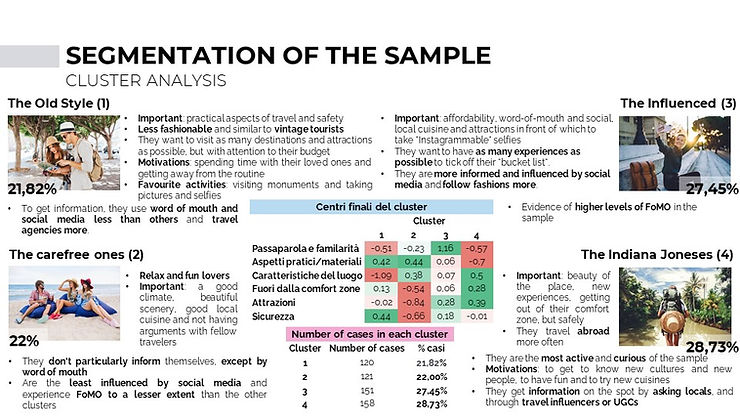
Given these 4 clusters, it is possible for tourism industry players to target their marketing campaigns according to which audience they want to reach the most and thus send a more effective personalized message to each of these subgroups of travelers.
The research also revealed which elements most impact traveler satisfaction and which travel industry players can work on to make a tourist’s trip as satisfying as possible.
The most relevant drivers of satisfaction are the beauty of the place, getting everyone to agree, the experiences or activities done on site, the attractions to visit, and the ease in reaching the destination.
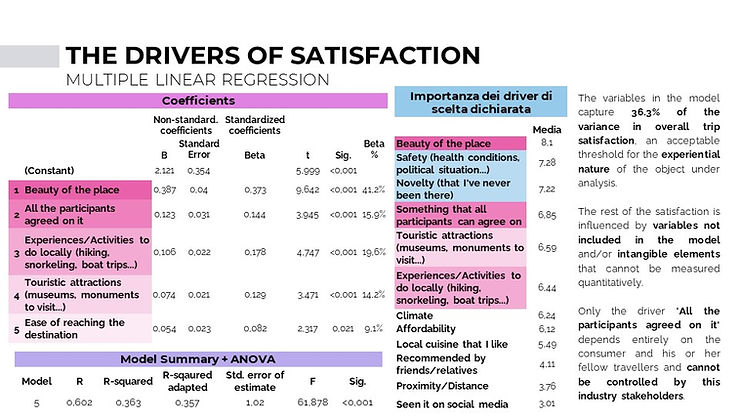
In this research, the influence of the Pandemic on tourists’ decision making in the near future was considered, albeit marginally.
At the moment, hope and desire to be able to return to travel were found to be high, but both research also showed a strong distrust and sense of insecurity for the future. In addition, health and political safety, as well as the affordability of a destination, are found to gain greater importance in a young tourist’s decision-making process.
